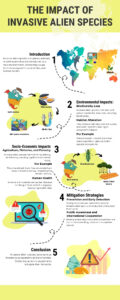By 2040, it is possible that the Arctic may not have any ice in the summer. Mention any potential effects on the waters. Talk about how this scenario will impact India as well. (Answer in 150 words)
Under the Mines and Minerals (Development and Regulation) Act, 1957 (MMDR Act), sand is a minor mineral. Main sources of sand are agricultural fields, riverbeds and floodplains, coastal and marine sand, lakes and reservoirs. Sand mining is done for use in the construction sector and to extract minerRead more
Under the Mines and Minerals (Development and Regulation) Act, 1957 (MMDR Act), sand is a minor mineral. Main sources of sand are agricultural fields, riverbeds and floodplains, coastal and marine sand, lakes and reservoirs. Sand mining is done for use in the construction sector and to extract minerals such as Rutile, Ilmenite and Zircon which contain useful elements Titanium and Zirconium. Sand is used in making glass, ceramics, silicon chips, solar panels, detergents, toothpastes etc.
According to the United Nations Environment Programme (UNEP), sand, along with gravels, are the most extracted minerals-accounting for 69-85% of the minerals mined every year. Further, the construction sector has grown at a fast rate because of rapid urbanization and infrastructure growth and government initiatives like Housing for All. Thus, the demand for sand is increasing every year leading to excessive as well as indiscriminate and illegal mining of sand.
Adverse impact of excessive sand mining can be seen in following ways:

Sand mining, when done at an optimum level, removes excessive sediment deposit in rivers. However, unscientific sand mining depletes river minerals at rates which the river system cannot replenish. Excessive mining undermines the ability of riverbeds and riverbanks to support the infrastructure built on them.
In this context, sustainable sand mining can help ecology in following ways:
- Ensure the conservation of the river equilibrium and its natural environment by protection & restoration of the ecological system.
- Avoid aggradation at the downstream reach especially those with hydraulic structures such as jetties, water intakes etc. and to ensure the rivers are protected from bank and bed erosion beyond its stable profile.
- Ensure there is no obstruction to the river flow, water transport and restoring the riparian habitats.
- Prevent groundwater pollution by prohibiting sand mining on fissures where it works as a filter prior to ground water recharge.
- Flooding is reduced as bed elevations and flood heights decrease, reducing hazard for human occupancy of floodplains and the possibility of damage to engineering works.
Therefore, to ensure sustainable sand mining, the Government of India has launched a Sand Mining Framework to ensure sustainable sand mining practices. Imported sand is also being promoted as an alternative to excessive sand mining.
See less

The predicted scenario of an ice-free Arctic by 2040 could have significant impacts on oceans globally and specifically affect India in several ways:1. Global Oceanic Impact: - Sea Level Rise: Melting Arctic ice contributes to sea level rise globally. As sea ice melts, it doesn't directly raise seaRead more
- The predicted scenario of an ice-free Arctic by 2040 could have significant impacts on oceans globally and specifically affect India in several ways:1. Global Oceanic Impact:
See less– Sea Level Rise: Melting Arctic ice contributes to sea level rise globally. As sea ice melts, it doesn’t directly raise sea levels (since it displaces its own weight in water), but the loss of ice from Greenland and Arctic glaciers does contribute significantly.
– Altered Ocean Circulation:The Arctic plays a crucial role in global ocean circulation patterns, particularly through the thermohaline circulation (ocean conveyor belt). Changes in sea ice extent can disrupt this circulation, potentially affecting climate patterns worldwide.
– Habitat Loss: Arctic sea ice provides critical habitat for various species, including polar bears, seals, and Arctic seabirds. Melting ice threatens their habitats and food sources, leading to potential population declines.
2. Specific Impact on India:
– Sea Level Rise:Coastal areas of India, particularly low-lying regions like the Sundarbans in West Bengal and parts of Gujarat and Kerala, are vulnerable to sea level rise. This could lead to increased coastal erosion, salinization of freshwater sources, and displacement of coastal communities.
– Monsoon Patterns: Changes in Arctic ice can influence atmospheric circulation patterns, potentially affecting the Indian monsoon. Variability in monsoon patterns could impact agriculture, water availability, and livelihoods across the country.
– International Relations: The opening up of Arctic sea routes due to reduced ice cover could present opportunities and challenges for India. It could potentially shorten shipping routes between Asia and Europe, affecting maritime trade and strategic interests.
In conclusion, the melting of Arctic ice and the prospect of an ice-free Arctic by 2040 will have far-reaching consequences for oceanic conditions globally, including sea level rise and changes in ocean circulation. India, as a coastal nation and a country highly dependent on monsoonal rainfall, faces specific risks related to sea level rise, altered monsoon patterns, and potential geopolitical shifts due to changes in Arctic dynamics.